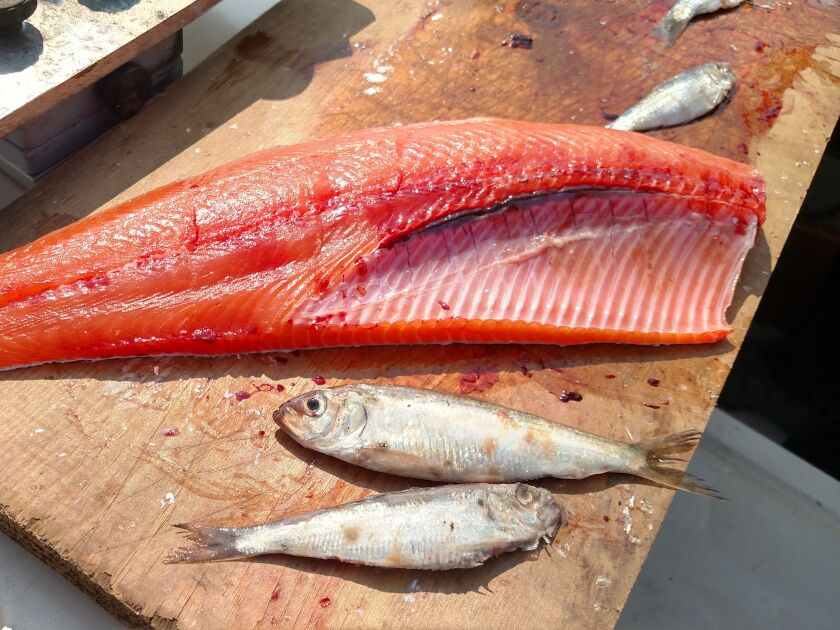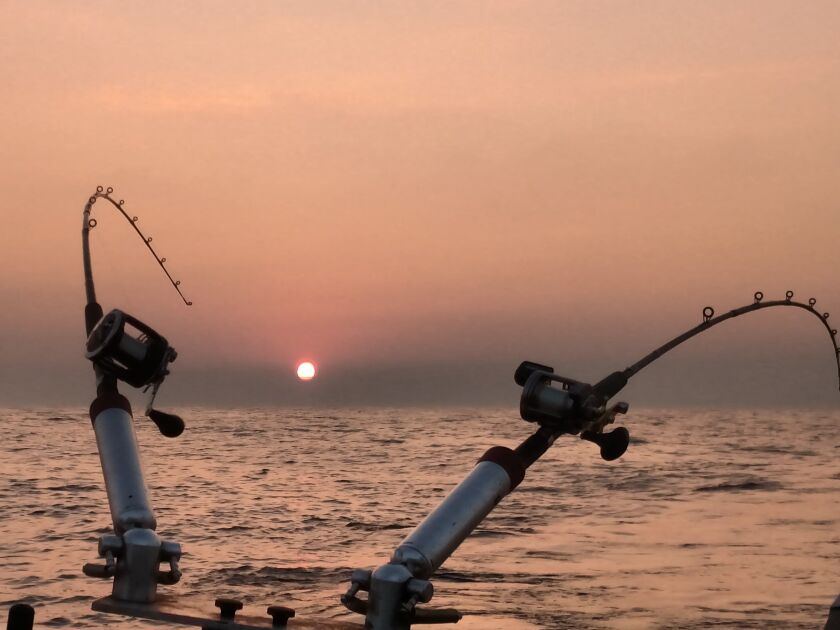Sometimes you have to gut it out in college.
Take studying the contents of 3,000 stomachs of trout and salmon from Lake Michigan.
“I roped in a dozen undergrads to help,” Austin Happel said. “They each wrote up a little report. It was a fun teaching experience at the University of Illinois.”
Sounds like working the agate desk in the sports department at the -Chicago Sun-Times.
Half of the stomachs were analyzed by the students at Illinois, where Happel, a research biologist at the Shedd Aquarium, started on the project while working on his doctorate. The other half were done by Ben Leonhardt as part of his masters at Purdue University.
The stomachs were part of a wide-ranging study on the changing diets of salmon and trout on Lake Michigan. The study delivers some things anglers already know and some interesting tidbits.
Leonhardt, now with the U.S. Fish and Wildlife Service, was lead author on “Diet complexity of Lake Michigan Salmonines: 2015-2016” on one part of the study. The article is online from the Journal of Great Lakes Research and in its August print edition. The Illinois-Indiana Sea Grant, the Great Lakes Fishery Trust and the Great Lakes Restoration Initiative funded the study. Scientists teamed with the USFWS and the Departments of Natural Resources from surrounding states.
More will be coming from the study, which came at diet in three ways: analyzing stomach contents for immediate diet in 2015 and ’16, looking at fatty acids to see what they ate over weeks and, finally, analyzing stable isotope ratios to study months of diet.
“It was a huge effort to accomplish something like this, so we needed help from just about everybody around the lake,” Leonhardt said in the IISG overview. “The anglers were the most important contributor.”
Supplying the fish for the study were Lake Michigan anglers and the Little Traverse Bay Bands of Odawa Indians.
Coho salmon and Chinook were stocked into Lake Michigan beginning in the 1960s, as part of an audacious plan by Michigan’s Howard Tanner to control alewives and start a sport fishery.
For more than half a century, alewives were the primary food for salmon and trout. But that’s evolving (well, not so much for Chinook, for which alewives make up more than 90 percent of their diet) as alewives declined while invasive round gobies, zebra mussels and quagga mussels arrived.
One of the key findings is that “due to their reliance on alewife, it is likely that Chinook salmon will be more negatively impacted than other salmonine species if alewife abundance continues to decline in Lake Michigan.”
Lake trout, brown trout, coho and rainbow trout (steelhead) adapted in various ways to the decline of alewives.
One thing the study showed was that variations came even among species changing their diet. Along the Michigan side, brown trout and lake trout ate more round gobies than alewives, but on the west side, it was the other way around. Happel said their theory is that the rockier west shore gives gobies more places to hide while “on the eastern side, it is more sandy and it is like a snack in an open field.’’
“Larger individuals eat more gobies than other browns and lakers,” Happel said. “As they get larger, they change swimming habits. Larger lakers are closer to the bottom, more exposed to the round gobies on the bottom.”
Native species, such as bloater chub and sculpin, even in years when their populations are up, did not impact diets as much at the invasive gobies and alewives. Happel speculated that the flash of alewives may be one of their appeals. There’s good reason anglers use flashing lures and attractors while pursuing salmon and trout.
Another oddity was that in the spring, only in the southeast portion of Lake Michigan, coho were full of mysis, a tiny crustacean known as opossum shrimp.
The abstract noted that rainbow trout added terrestrial invertebrates.
“That was unexpected for me coming into this project,” Happel said. “They were often full of stink bugs or ladybugs or ants. The best explanation I could come up with is the scum lines. All of [the] fish came from anglers, so maybe anglers were targeting around the scum line. I think they are finding them at the scum line, and they are very abundant. You also find tiny alewives around scum lines.”
That observation might mean something for fishing.
Lake Michigan keeps evolving, and so do smart anglers.
The IISG has a good layman’s overview at iiseagrant.org/lake-michigan-chinook-salmon-stick-with-declining-alewife-as-their-main-meal/.







